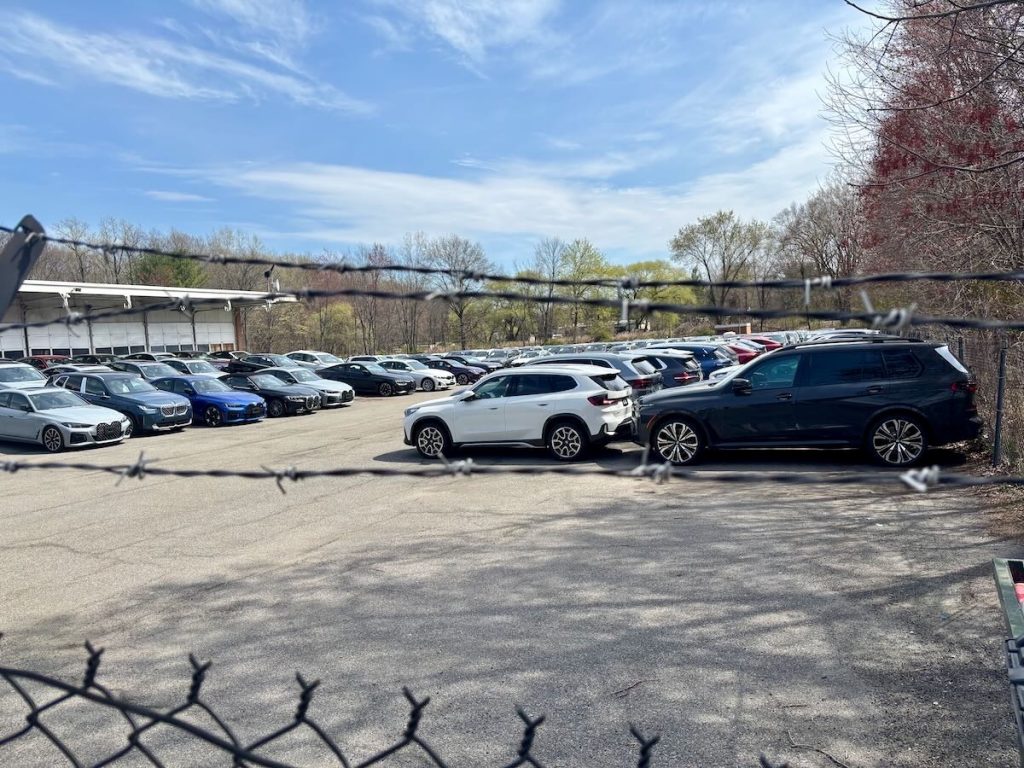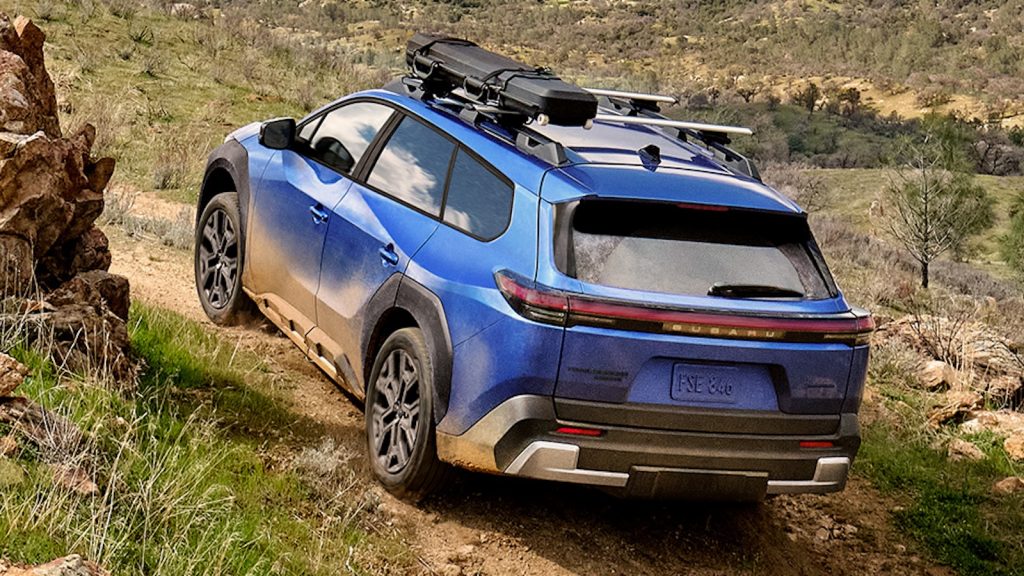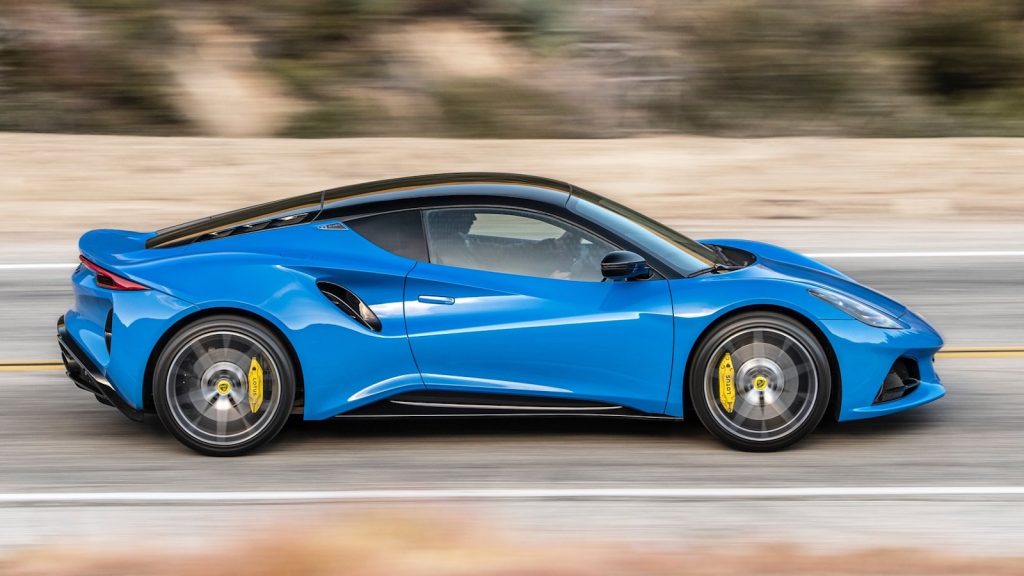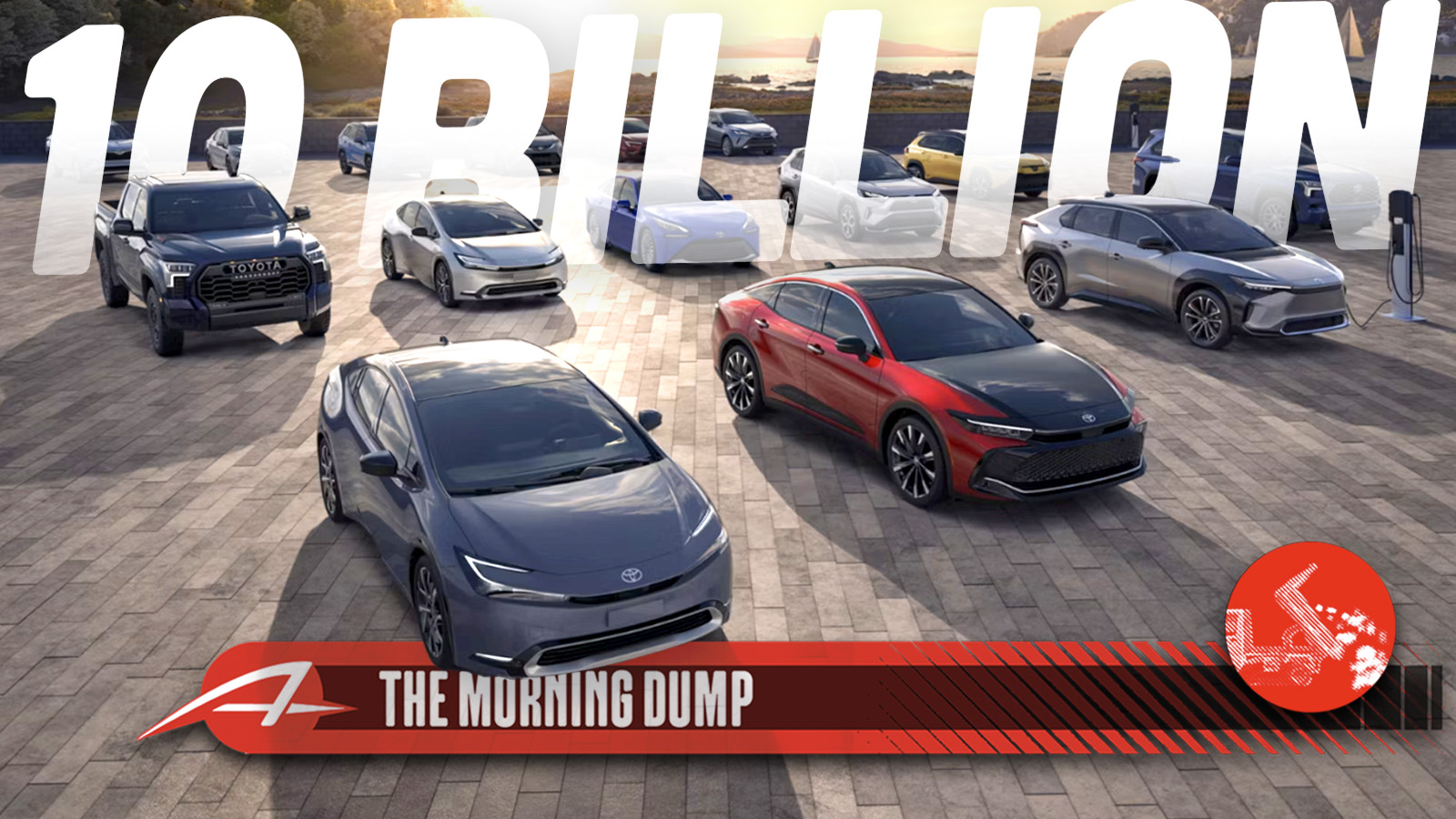Toyota was the last of the major Japanese automakers to report its earnings and projections for the upcoming fiscal year, with the company announcing it’ll see about $9.68 billion in tariff-related costs through next March. The unresolved question of all of this, ultimately, is who will end up paying the price.
For now, it’s the automakers, but anyone who reads The Morning Dump is aware that what can seem like short-term gain can soon turn into long-term ruin. I’m getting some real Tavares-era Stellantis vibes from the economy right now, and I’m not alone in sensing something might turn the wrong way.
Subaru has the same concerns. The automaker is simultaneously releasing a slew of electric cars while, at the same time, considering whether or not it needs to slow down its electric car plans. This is a slow motion reversal, as opposed to whatever has been going on at Lotus.
Is it Thursday already? I guess it is.
Toyota Will Take A $9.68 Billion Hit And Also Remain Profitable
Japanese automakers are on a fiscal year that ends in March, which is why roughly a year ago, I got to write about how Toyota became the most profitable company in that country’s history. This was a high point for Toyota, but the numbers didn’t tell the full story. As we would learn, this rush to profits involved allegedly squeezing its subsidiaries nearly to the breaking point, and resulted in a bunch of embarrassing admissions about fudged tests and a call for major reform.
The automaker was in the process of making these reforms when a new administration in Washington decided to upend global trade. The result? Here’s how Toyota put it in its FY2026 Q1 presentation:
The full-year operating income forecast has been revised downward by 0.6 trillion yen from the previous forecast to 3.2 trillion yen. Concerning the impact of U.S. tariffs, in light of the Japan-U.S. agreement, we have now factored in the full-year effect. As a result, we are expecting a 1.4 trillion yen impact, a 1.2 trillion yen increase from the impact reflected in the previous forecast.
If you can’t do the conversion in your head, that’s about $9.7 billion at the current exchange rate. Is this being conservative? Probably! Toyota is a conservative company, and the recent trade deal might be more in its favor. Additionally, if the yen falls against the dollar again, that could help reduce some of the impact.
Will Toyota still make money? Sure. In the last quarter, there was a 142% drop in year-over-year operating income, but the company’s margin was still a healthy 9.5%. Toyota projects that it’ll see operating income for the full fiscal year drop by about $4 billion, with a margin of 6.6%.
Not great, not terrible.
There’s a bit of a question as to who exactly will pay for all of this.
You Will Pay For Some Of This, Eventually

I’ve become a little obsessed with the short-term/long-term of all of this. There’s a version of history that says the Democrats lost in the last election cycle because everything got more expensive. One of the reasons everything got more expensive is that companies used the pandemic as an excuse to raise prices beyond what was justified by cost increases. This is called “greedflation,” or maybe “Sellers’ Inflation.” In the automotive world, we had “Trimflation.” If you were bummed that your bag of potato chips suddenly felt lighter, that was “shrinkflation.”
Most economists have expected that all of the President’s tariffs would make everything more expensive, which seems counterintuitive to what voters expected, but it’s a bit more complicated than that. Companies have been slow to raise prices. Why? Bloomberg points to a couple of reasons why:
US businesses are the ones coughing up the money to pay the tariffs at ports and airports across the country. Even at 10%, those fees result in a substantial increase in costs. (One shipping container coming into the US will often carry $1 million worth of products. A 10% tariff means $100,000 more in taxes.) This leaves companies with a couple of choices: They can eat those costs and simply accept lower profits, or they can pass those tariffs along to us. So far neither has happened in a major way. What’s going on?
Chad Bown, an economist at the Peterson Institute for International Economics, has been studying the tariffs. “It’s all that I do,” he says. He thinks we’re in a kind of liminal space with tariffs. The reason: Many companies haven’t really been paying Liberation Day tariffs yet, because they started panic-importing long before April 2. “Trump campaigned on tariffs,” Bown says. “When Trump won the election, American companies said, ‘Gosh, we’d better import as much stuff as we can and put it into storage in case he actually does impose those tariffs.’”
Every few weeks, I go to the lots where automakers store excess cars brought in via the New Jersey port, and those lots seem extra full recently. Erin Keating, an analyst over at Cox Automotive, points out that costs are not immediately rising dramatically:
So far, consumers have been shielded from higher prices. Average transaction prices (ATP) are mostly flat or slightly down year over year, even as manufacturer’s suggested retail prices (MSRPs) continue to rise. We believe MSRPs are more closely related to the cost of producing a vehicle, and our estimates show that MSRPs were up 2.3% year over year in June, marking the third consecutive month of higher MSRPs. This increase is lower than long-term averages, but after nearly two years of steady new-vehicle prices, the trajectory is clearly on the rise now.
ATPs, on the other hand, were higher by only 1.2% in June, suggesting consumers are not yet feeling the full force of higher costs. Instead, automakers and dealers are containing the higher costs created by tariffs while watching profitability decline. Popular compact SUVs are being hardest hit by tariff policy, as many are imported. With tariffs in place, automaker costs increase by an average of $2,800 per imported unit. Subcompact SUVs are hit hard as well: The average tariff bill is nearly $3,000. Consumers, however, are not yet seeing this level of increase at retail.
But that won’t last. The Cox Automotive team still expects consumers to see retail prices climb by 4–8% by year-end, with price increases accelerating as 2026 model-year vehicles hit the market. An update on July prices from Cox Automotive will be available next week.
That 4-8% impact on car prices is what consumers will pay, and that giant range is a measure of how much uncertainty remains in the market, and how different automakers will see different outcomes. Toyota has a strong balance sheet, global sales, and enough heft to absorb a lot of this.
If you look at the base Corolla, that’s approximately a $24,000 car, delivered. With a 4% increase, it becomes a roughly $25,000 car. At the higher end of the estimate, it becomes something closer to a $26,000 car. In this scenario, you’re paying $1-2,000 (plus another $400 possibly in interest), and Toyota, potentially, is paying $2,000. My guess is that Toyota will remain at the lower end of the range, given its modeling. It’s not the biggest leap in the world, but for consumers still facing higher interest rates, it’s not welcome news.
Is there an upside to this? Maybe. More companies are looking to expand operations in the United States, meaning more jobs in certain places and certain industries. For automakers who make big trucks, there are ways that relaxed fuel economy standards could offset some of these increased tariff costs and make those vehicles cheaper.
Even if the cost to consumers isn’t an immediate wallop, there are other concerns, which the Bloomberg editorial board laid out in stark terms:
Tariffs that are substantially — even if not ruinously — higher will raise prices, blunt competition and hold down living standards, especially in the US. Note that choosing not to retaliate, while embarrassing, leaves Japan and Europe more open to trade, ensuring that the US will be the biggest long-term loser.
Worst of all, US bullying will cause lasting and possibly irreparable damage to America’s alliances. From now on, humiliated governments and their angry electorates will discount US promises and no longer look so kindly on its geopolitical priorities. Over time, they’ll lessen their reliance on Washington and deepen other economic, diplomatic and security relationships instead.
Even if the administration’s short-term gamble pays off politically, this supposed triumph will eventually be seen for what it is — an inordinately expensive, and entirely self-inflicted, error.
Historians may judge this as a massive foreign policy error; completely unrelated: President Trump just fired a bunch of foreign policy historians.
Subaru Walks Back EV Spend, Cranks Up U.S. Factory

Speaking of history, I do wonder if society will look back at the present moment and see the drop in electric car commitments as a response to White House policy. I think that would be largely incorrect. The example of China and Norway is that consumers will adopt EVs (or at least EREVs) when it’s made easy and affordable for them because, for most people, these are way better cars.
No offense to the Volkswagen Santana (I now badly want a Chinese-market Santana taxi, thanks, LionZoo), but a Nio ET7 is a 9,000x better vehicle.
The other lesson of China and Norway is that it’s enormously expensive and labor-intensive to make this switch right now, given the state of battery chemistry limitations. The reality, automakers were already well on their way to trimming back forecasts before the election, and the idea that the market in the United States would suddenly be 80% electric cars by 2030 was always a bit silly. What do I think the new car market will look like in 2030, roughly?
- 20% EV
- 30% Hybrid
- 5% PHEV
- 10% EREV
- 35% ICE
That’s backed up by nothing but vibes, but there you go. I’d love for there to be more EREVs, so I hope I’m wrong.
Where does Subaru end up in all of this? Here’s what the company announced, via Hans at Automotive News:
Amid the weakening earnings, CEO Atsushi Osaki also said the company was re-examining the timing and allocation of its ¥1.5 trillion ($10.37 billion) investment in electrification.
It is also looking for ways to produce more vehicles out of its only U.S. assembly plant.
Citing the end of U.S. tax credits for EVs and the cooling sales growth for battery electrics, Osaki said Subaru wants to boost its production ratio of internal combustion and hybrid vehicles.
Subaru Corp. has previously said it wants to electrify all its vehicles — with either standard or plug-in hybrid setups or full battery-electric systems — in the first half of the 2030s.
Now it says it expects to achieve a 50 percent all-electric ratio sometime after 2030.
So, “sometime” could mean 2031 or 2099.
At the same time, because of tariffs, the company is looking to see if it can squeeze 400,000 cars out of its one American plant this year. That’s more shifts and more work for people in that community, which I’m sure they’ll be grateful for.
European Lotus Boss Leaves After Four Months

I mostly skipped the drama around Lotus because it happened so quickly and, you know, our Norfolk readership ain’t huge. If you missed it, the Financial Times reported that Lotus parent Geely was going to shutter the historic Hethel factory earlier this year. Then, a day later, the Government stepped in and Lotus said it was absolutely not going to close its Hethel factory.
Unsurprisingly, European Lotus boss Matt Windle, who just got the job, ain’t sticking around for much longer. I’ll let the FT take it away since they’ve been on top of this story:
Windle, who started off as chief engineer at Hethel, was promoted from running the UK business to head of Lotus Cars Europe in April when his predecessor, Dan Balmer, left after less than a year.
However, following the turmoil over the future of the Hethel plant, Windle recently agreed to step down from his role and has been absent from significant meetings over the past few weeks, according to two people with knowledge of the situation.
Lotus and Geely declined to comment. Windle did not respond to requests for comment.
Lotus is one of those companies I will probably always be rooting for, mostly because Lotus is one of those companies that will always require people who root for it in order to survive.
What I’m Listening To While Writing TMD
Rob Harvilla just put out an episode of his excellent podcast on Wilco’s “Heavy Metal Drummer,” and it’s just reminding me how much I love the album Summerteeth. I suppose Yankee Hotel Foxtrot is supposed to be the American OK, Computer, which also reminds me that I also slightly prefer The Bends to that album. I’m weird that way. It’s a drag-ass Thursday, so let’s listen to “I’m Always In Love.”
The Big Question
What’s your favorite Toyota product of all time?
Top Photo: Toyota








2000GT
At my local N CA dealers, no Sienna inventory and the ones coming have a $3,000 markup. How’s that for a tariff?
Tacomas are plentiful, most other Toyota models, not so much.
Most people will pay zero, they will choose other manufacturers. Toyota will suffer bringing them to the negotiating table. Agreements will be made. The tariffs will be removed.
How Much Will You Pay For Toyota’s Nearly $10 Billion Tariff Hit?
Automakers will spread the tariff cost across their portfolio and/or drop lower margin models completely. Buyers must either prepare for Corollas staring at $27K and Camry’s starting at $34K or watch the price go up even more from the LE trims going away.
For me it’s the MK3/A70 Supra with the targa top and a turbo please.
I graduated from high school in 1992 and there was a billboard with a white one with the top off and I absolutely loved it.
The only Toyota I’ve owned was a 5 door Tercel that I think was a 3rd gen, and while it wasn’t the nicest car it was as reliable as you could hope for.
French dude here. That quote feels very very true to me: “Worst of all, US bullying will cause lasting and possibly irreparable damage to America’s alliances. From now on, humiliated governments and their angry electorates will discount US promises and no longer look so kindly on its geopolitical priorities. Over time, they’ll lessen their reliance on Washington and deepen other economic, diplomatic and security relationships instead.”
When I grew up in the ’90s, Americans were the good guys in the movies. You had won the cold war. Clinton was laughing with Boris Eltsine, 9/11 hadn’t happened yet. You were the champions of democracy. A beacon of hope and progress.
Ever since Trump has been elected in 2016, this image has changed, and it got worse with Trump’s second term. When you ask around, people don’t want to visit the States anymore. It doesn’t feel safe or stable. The mass deportation scheme feels dystopian. Your government seems just as corrupt as the Russian oligarchy. We don’t trust you to uphold your end of NATO given how hesitant you’ve been to help a European country being invaded. We don’t trust you as a commercial partner either.
It feels like Donald sees everyone, including long time allies as competitors or even enemies. Weirdly, he seems friendlier with Kim Jong Un and the likes. And since you elected him TWICE, with more votes on his second term despite his coup attempt, we stopped seeing the American PEOPLE as reliable.
So yeah, enjoy all the winning right now, but when you feel like choosing a government that’s a little less crazy, it’ll have a hell of a job rebuilding trust with us commie European sissies. Unless we elect our home grown far right idiots.
This,
Everything US has gone from yum to yuck in a few years time.
I am seeing a lot of my EU friends look for alternatives to US services. Switch-to.eu comes to mind. Even going to eastern providers.
It will take decades of US diplomacy to heal these wounds.
Favorite Toyota product, it depends on the rules.
Unattainable:
TMC: LFA
Toyota brand: A80 Supra MT
Real world:
TMC: GS 350
Toyota: Tacoma
Favorite Toyota product, have to give the nod to a 1986 Cressida Wagon: comfortable, airy, full of electro doo-dads, an inline six, and…two rear wipers! Imagine a world where an engineer argues for two rear wipers and wins. That’s just special.
if you were waiting for the compact pickup or baby land cruiser, you will pay because now these vehicles will never come to market, god damn it
I’m still driving it (1st Gen Matrix XRS). Next car bought will likely be a Toyota as well.
If they’d extend the GR Corolla into a proper wagon, I wouldn’t be sitting here typing this. Else some plug-in hybrid and die inside a little bit (though I’d keep the Matrix).
I love the old Tacomas and early FJ’s.
On the tariff side of things it looks like UPS is looking to lay off and trucking in general is in a recession.
A couple paragraphs from WEX a trucking credit card company with their finger on the pulse of the trucking industry.
Tariff policies enacted by the U.S. government in early 2025, including reinstated and expanded duties on goods from countries like China, Mexico, and Canada, are having a broad ripple effect across the trucking industry. According to Bur, the most concerning aspect is how these tariffs drive up costs not just on imported consumer goods, but also on intermediate materials used in domestic manufacturing.
“Roughly 50% of what we import are intermediate goods,” says Bur. “Even if final goods are manufactured in the U.S., rising prices on inputs mean those finished products are still getting more expensive.”
For trucking, that means rising costs across several freight categories:
In short, the tariffs affect both the supply and the demand sides of the freight economy
Well I for one am shocked. SHOCKED!
What’s your favorite Toyota product of all time?
FJ40.
Stew Leonard said he is eating the first 10%, then raising prices after that. One data point.
(for those outside of Southern CT, Stew Leonards is a high end grocery store)
Tells you that Stew Leonard has been fleecing its customers for a while.
If you’ve been there, you’d understand. Bougie is a term that comes to mind. Whole Foods sits under Stew Leonards on the scale of super markets.
Matt, this is the correct take on Summerteeth and The Bends.